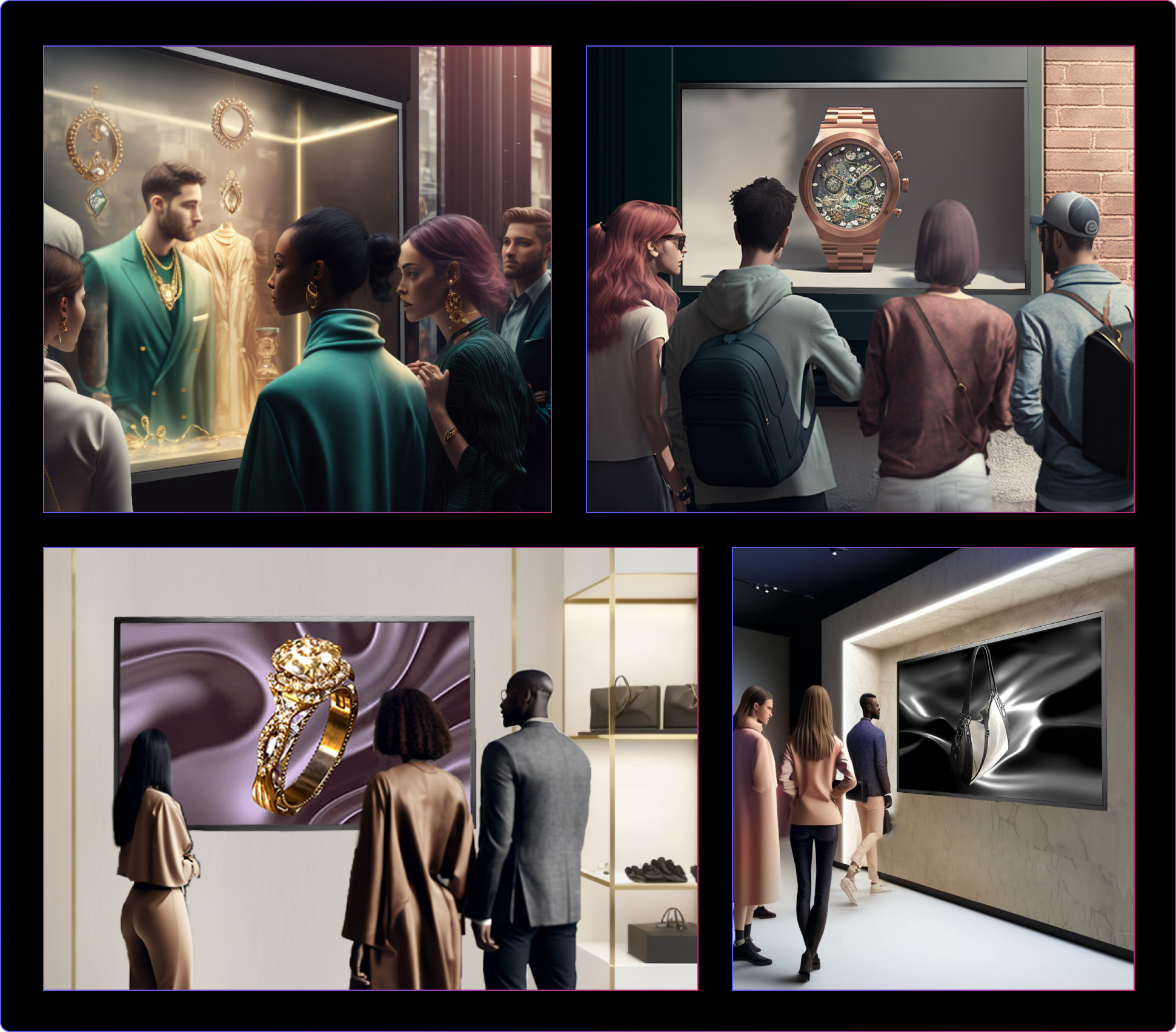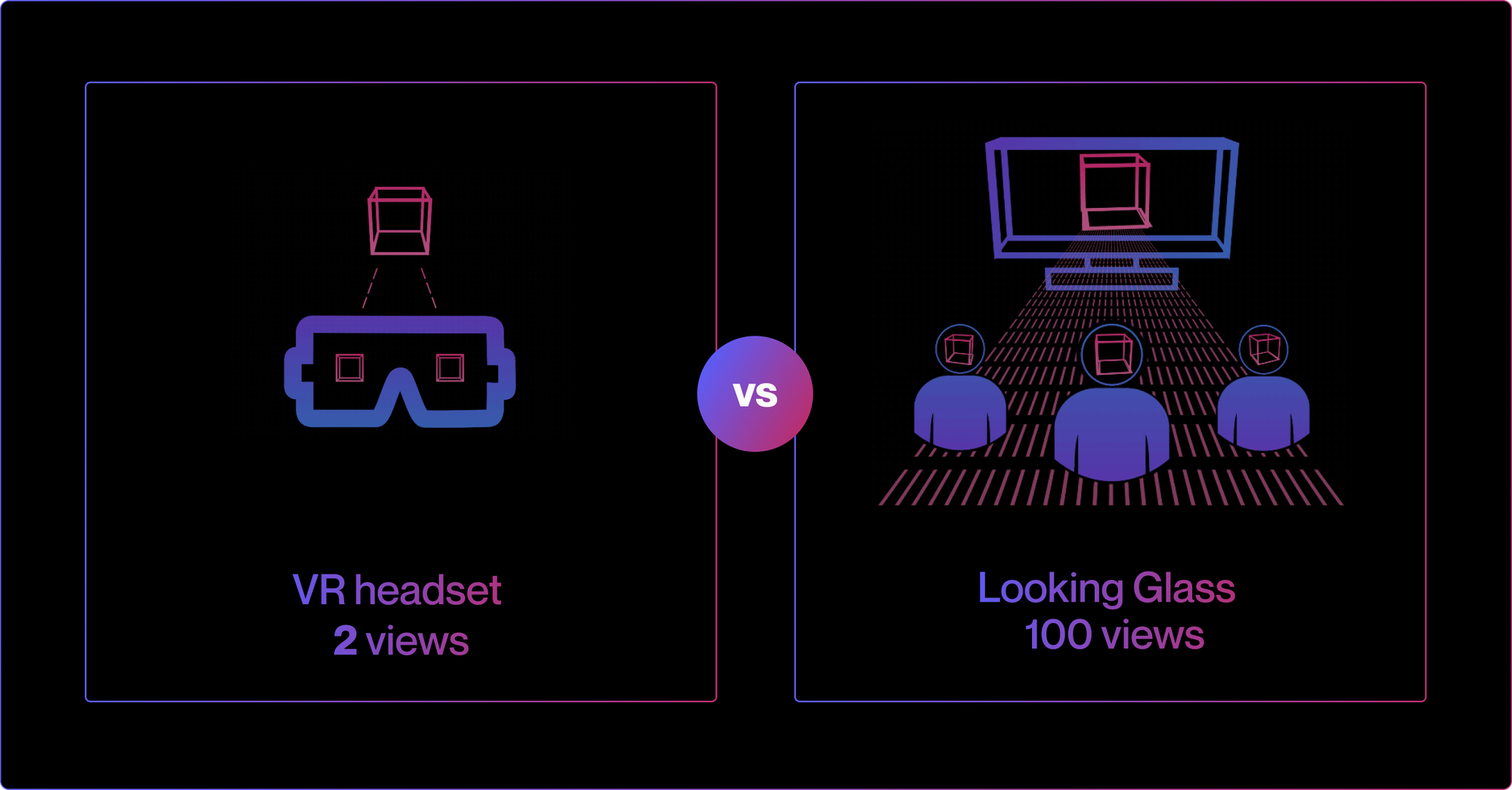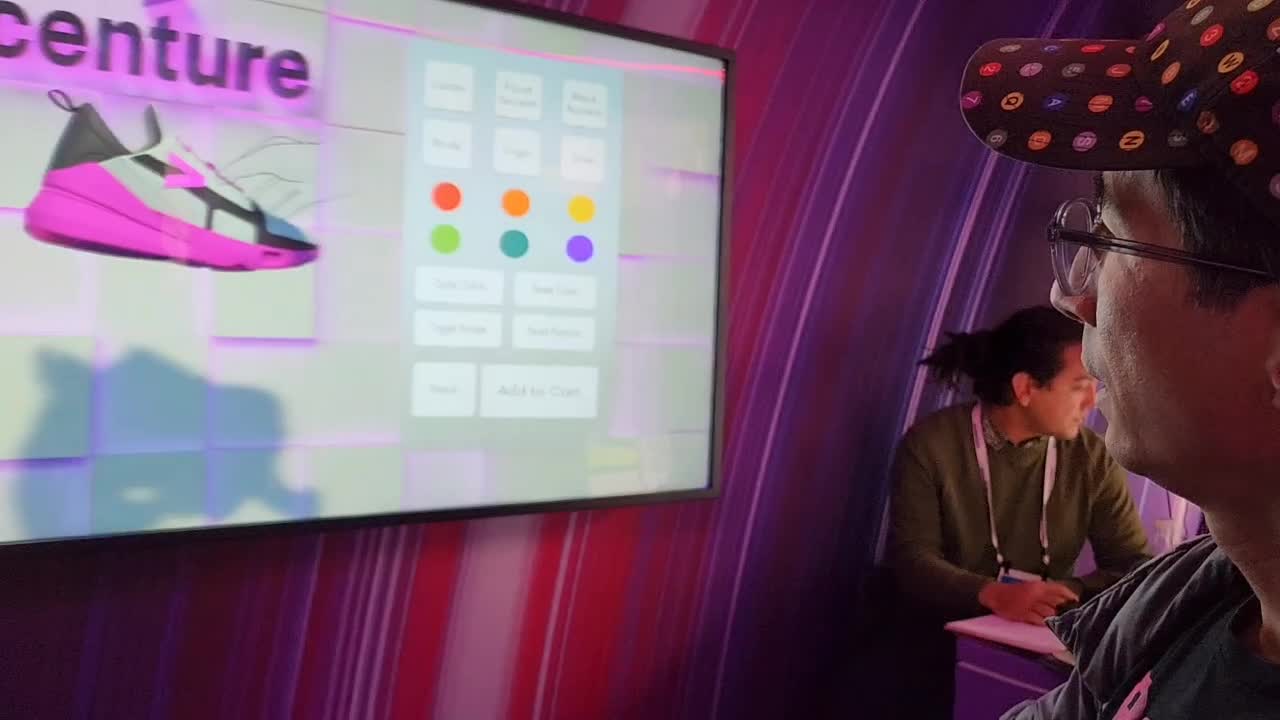The Future of Retail: 3D Immersion
Retail is changing. Again.

The explosion of e-commerce during the pandemic posed a double-edged sword for retailers. While offering consumers once-unimaginable convenience and choice, it elevated the difficulty of attracting shoppers to brick-and-mortar stores, often needed for deeper brand-building engagements.
Recently, however, the most beloved and successful brands are making a concerted push back to the storefront—and bringing innovative technologies with them. The global smart retail technology market is expected to grow to $68.8 billion by 2026. (Markets, Research and. “Smart Retail Technologies and Global Markets 2021-2026: A $68.8 Billion Market by 2026 with a CAGR of 24.9% Forecast During 2021-2026, December 22, 2021). To stay connected with customers, it’s more crucial than ever to offer dazzling, memorable in-store experiences.
Holographic marketing: the next retail innovation
Wiggle to view in 3D
Digital tools have made in-store shopping quicker, more convenient, and less cluttered. But what they haven’t done yet is recapture the magic feeling that used to be associated with the physical retail experience.
That’s where holograms come in. By introducing a digital experience that will be truly unique to passers-by, holograms offer a much-needed medium for capturing and holding consumer attention in a cluttered landscape. 61% of consumers say they would prefer brands that use immersive tech, and holograms offer the most immersive digital content that can be viewed by groups in public settings.1
Bringing more immersive digital experiences in-store, holograms promise to allow for multiple customer touch points throughout the metaverse. Imagine a retail journey that looked like this:
- A consumer walks past your store—and their jaw drops. They’re seeing their first-ever hologram, and it happens to be a stunning rendering of your product.
- That consumer enters your store, where they are able to view every product in your entire inventory in vivid 3D with life-like lighting, textures and materials.
- The product customization often relegated to ecommerce is brought to life with a holographic product configurator.
- Customers receive a personal hologram of their creations, that can be viewed on any device and instantly shared online to marvel over or share with friends, fueling word of mouth.
Bring the most immersive customer experiences to public spaces

We know that VR can transform online retail. But it’s an inherently solitary experience, and one not particularly well-suited to in-store activations. Headsets provide a layer of immense friction between passers-by and your content; it’s impossible to give them a glimpse of the experience without gaining their attention for long enough to get them to wear a headset.
On top of that, as dazzling as a VR experience can be, it can only be viewed by a few store-goers at once. Compare the following two pictures: on one side, you have two customers wearing headsets on your showroom floor, while other store-goers watch passively. On the other side, a larger-than-life hologram provides a one-of-a-kind digital experience that can be viewed by up to 100 people at once.
Looking Glass: ushering in the 3D revolution

Holograms are already making their imprint on retail. Brands have leveraged the Looking Glass solution to bring deeper, more impactful retail experiences to their companies. Stay tuned for examples of larger-than-life holographic brand experiences.
In the meantime, learn more about the most immersive retail experience in the market.

